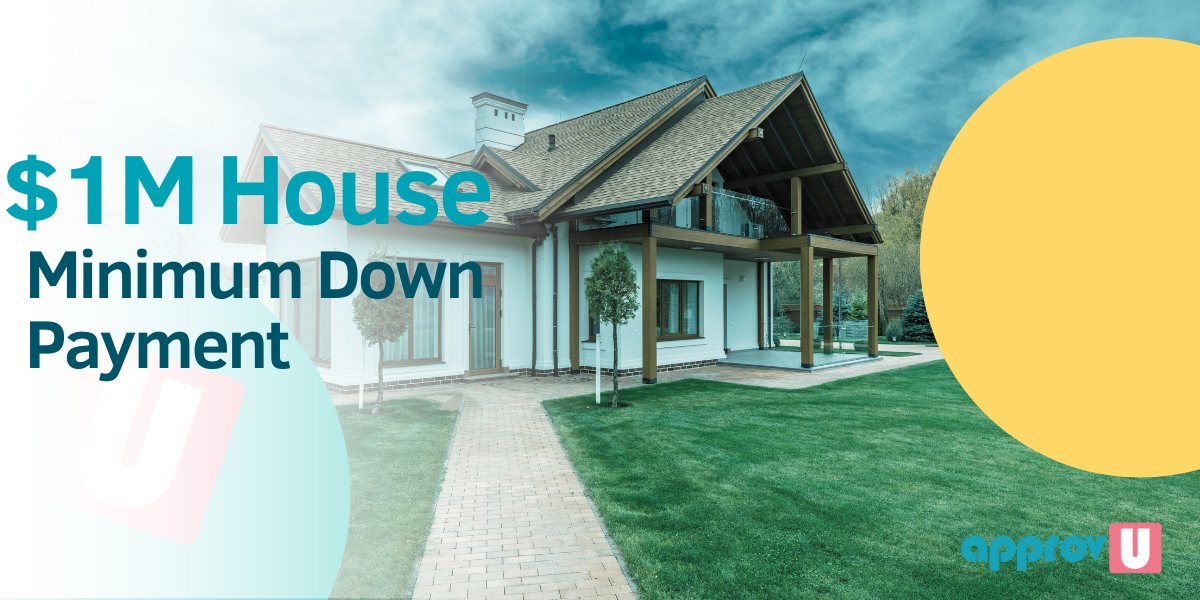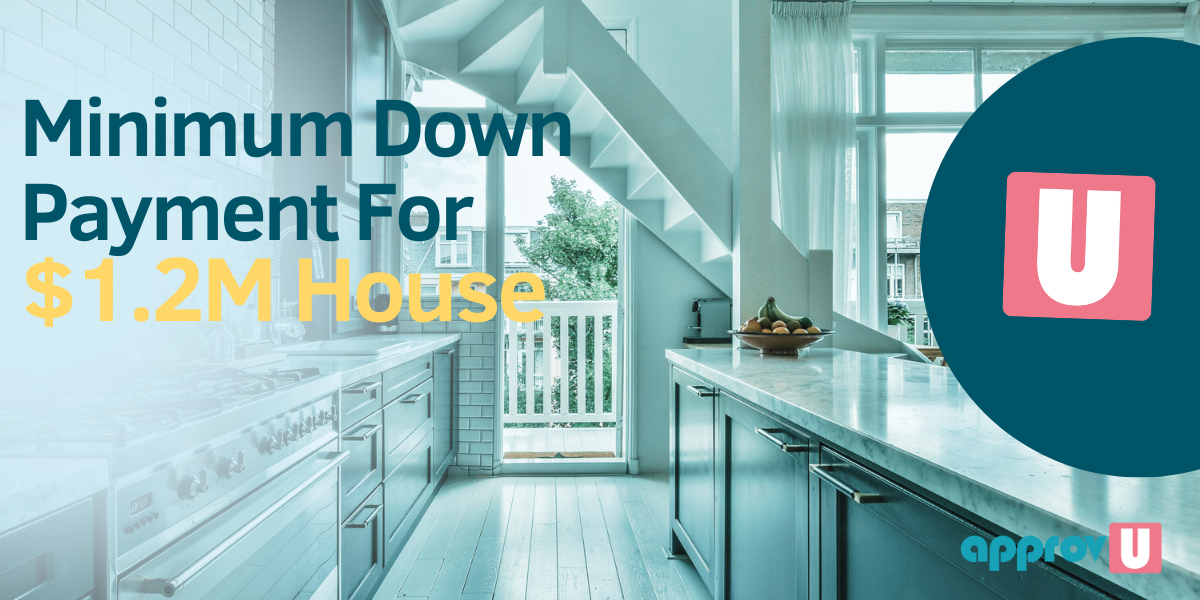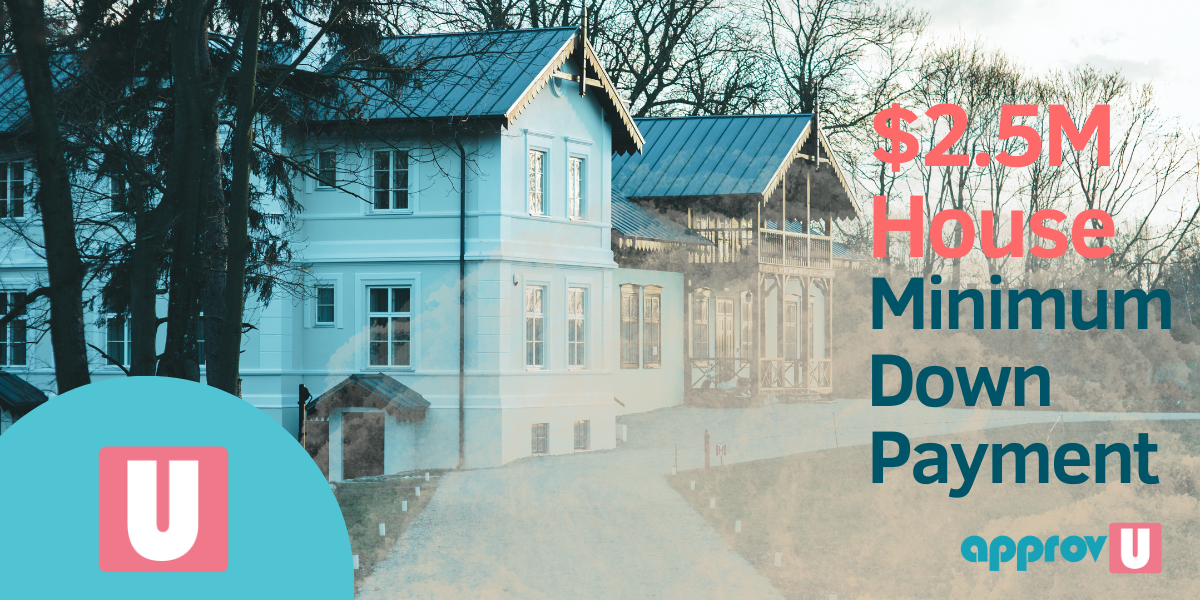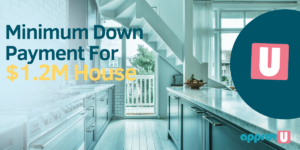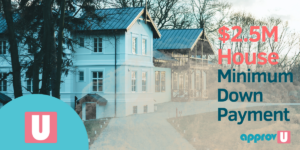Buying a $1 million house isn’t just a real estate transaction—it’s a major financial commitment.
The down payment requirements are significant; understanding them is crucial for success.
This guide will explain the down payment rules for high-value properties and help you plan accordingly.
Understanding Down Payments for High-Value Properties
Buying a home worth over $1 million means playing by a different set of rules – especially regarding down payments.
Here’s what you need to know:
The $1 Million Threshold: Why it Matters
Canadian mortgage rules change once you cross the million-dollar mark.
Mortgage default insurance, often allowing buyers to put smaller down payments, isn’t available for these properties.
Lenders want to ensure buyers have enough “skin in the game” to handle the financial commitment of a high-value home.
The 20% Minimum: Your Starting Point
The hard rule for homes over $1 million is a 20% minimum down payment.
For a million-dollar house, that means $200,000 in cash.
This isn’t meant to be discouraging – it’s about protecting you and the lender.
Having a larger down payment from the start reduces your risk of default and gives you instant equity in the property.
Beyond the Minimum
Remember, 20% is just the starting point.
Lenders often have additional requirements for high-value properties, so be prepared to put down more.
Mortgage Regulations for High-Value Properties
Properties priced at $1 million and over do not qualify for default mortgage insurance.
This insurance policy allows lenders to offer mortgages with a low down payment of less than 20% of the house price or value.
The policy safeguards lenders in case of borrower default.
This regulation manages risks effectively, recognizing high-value properties’ distinct financial dynamics and risks.
Therefore, you need a minimum 20% down payment ($200,000 on a $1 million property) to buy a million-dollar house in Canada.
This large down payment serves two key purposes:
- Demonstrating Commitment: It shows lenders you’re serious and have the financial capacity to handle this investment. Having more money in the property makes you less likely to default on the mortgage.
- Protecting the Lender: Your substantial down payment creates equity, lessening the lender’s risk. If you default, they will likely recover their money by selling the property.
These rules aim to keep the high-end real estate market stable.
Factors Shaping Down Payment Requirements
Different factors can sway the down payment requirements established by lenders when considering a $1 million home purchase.
Understanding these elements is vital for effective financial planning.
Credit Score
Your credit score significantly influences mortgage terms, including down payment needs.
A strong score signals low risk to lenders, potentially easing down payment terms.
Conversely, a weaker score may prompt lenders to demand a higher down payment, surpassing the standard 20%.
Income Verification
Lenders scrutinize income verification, favouring stability.
Verifiable income, such as documented earnings, may maintain standard down payment conditions.
However, non-verifiable income, common among freelancers, may necessitate a larger down payment to mitigate risk.
Property Usage
The property’s intended use impacts down payment requirements.
Primary residences typically follow standard down payment guidelines. Conversely, investment properties entail higher risk, prompting lenders to demand stricter down payment requirements.
Property Location
Location plays a crucial role in the down payment percentage.
Urban centres often maintain stable values, warranting standard down payment terms.
In contrast, rural areas may require larger down payments to offset perceived market risks.
Location Considerations for Property Purchases
Location plays a big role in the down payment your lender will require when buying a $1 million property.
Here’s how urban vs. rural settings impact your finances:
- Urban Centers: Cities like Toronto or Vancouver have strong real estate markets. Lenders see these properties as easy to sell if necessary so that they may accept the standard 20% down payment.
- Rural Areas: Properties in less populated areas can be harder to sell quickly. Lenders consider them riskier, which often leads to them requiring larger down payments to offset that risk.
The Key Takeaway:
Lenders assess your finances and consider the property’s marketability.
Understanding this helps you plan accordingly. Whether you dream of a bustling city home or a rural retreat, knowing how location affects your down payment is essential for a smooth purchase process.
Conclusion: How Much Down Payment Do I Need for a $1 Million House?
The down payment is a crucial part of the puzzle as you prepare to buy your $1 million home.
The 20% minimum ($200,000) shows that this isn’t just about buying a house—it’s a major financial commitment.
Saving such a large amount takes dedication and planning.
Set clear goals, budget carefully, and consider ways to boost your income. Remember that closing costs and fluctuating mortgage rates are also part of the financial picture.
This journey is about building a home and a secure financial future.
Your careful preparation is an investment in yourself.
When you finally move into your dream home, you’ll know it was built on a solid foundation of smart financial choices.


